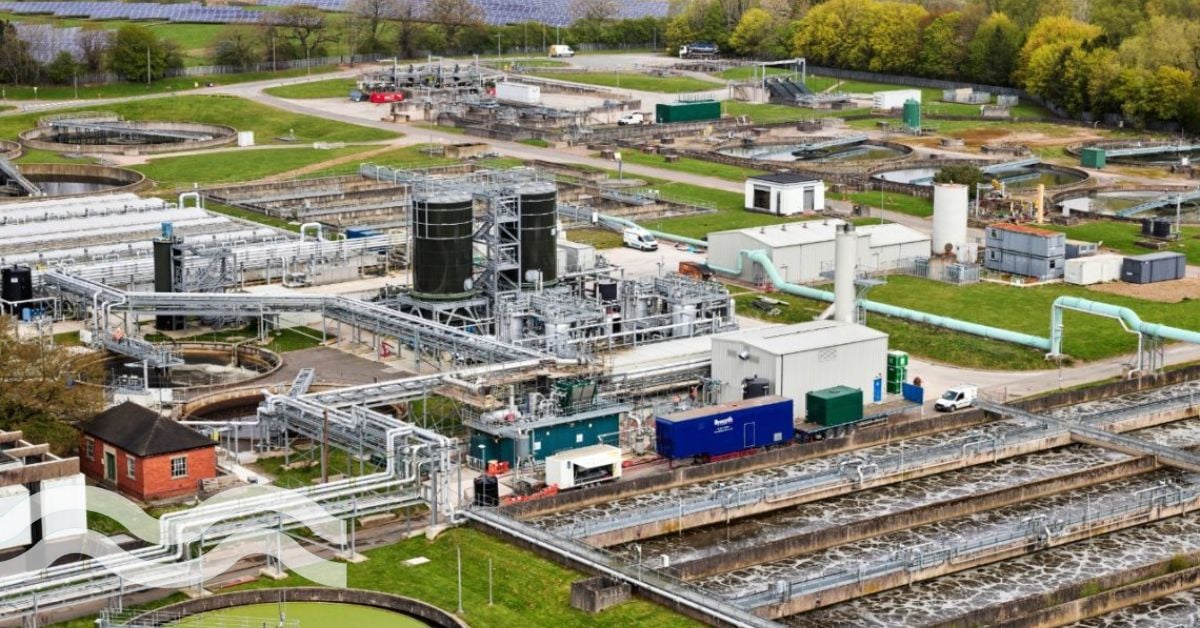Retrofitting carbon neutral wastewater treatment
A multi-million-pound project, backed by all UK and Irish water companies and Aarhus Vand in Denmark and Melbourne Water in Australia, is set to transform a carbon-intensive wastewater treatment plant into a retro-fit carbon neutral site.
Eliminating 34,000 tonnes of carbon
The Strongford Sewage Treatment Works in Staffordshire, UK, will collaborate with multiple technology providers to reduce and eliminate carbon, removing 34,000 tonnes each year.
Called a ‘net-zero hub’, the project is being supported by the Ofwat Innovation Fund, through a £10 million cash injection. A further £0.9 million has been secured through Horizon Europe and £28 million will be invested by Severn Trent.
Dr Nerina Di Lorenzo, MD of Melbourne Water, said: “What an exciting stage of ground-breaking net zero-focused collaboration, research and innovation.
“The partnership Melbourne Water shares with Severn Trent and Aarhus Vand is already progressing a range of projects to reduce the carbon footprint of wastewater treatment plants. Further, with a technical focus on nitrous oxide emission measurement, we’re developing nitrous oxide monitoring and mitigation strategies that will help us better manage and eradicate this dangerous greenhouse gas. So, we’re already making real and measurable forward steps towards net zero.”
Already home to advanced digestion (THP) and ‘gas to grid’ technology, the site will also introduce Digital Twin technology, which includes low carbon technologies such as low-power sensors and autonomous robots operated from the plant’s control room.
Among the new processes on site is a technology from waste and water group SUEZ, called ‘Actilayer’ which aims to tackle N2O gas emissions from activated sludge plants and significantly reduce the carbon impact associated with wastewater treatment.
An advanced filter uses light energy (often sunlight) to break down captured pollutants through photocatalysis, which can be retrofitted into existing tanks.
Cellulose recovery from wastewater
Other projects include cellulose recovery from Dutch company, Cirtec, through its Cellvation product. A process that enables the recovery of used toilet paper from sewage and turns it into valuable cellulose, either in a fluffy form or in pellets.
Wastewater enters the treatment plant and flows through a coarse screen that removes large particles. After that, the Cellvation process effectively starts when the sewage water is pumped through a grit chamber to remove the easily sinkable solids. Remaining wastewater goes through the cellulose washer that separates the cellulose fibres from larger particles and hairs. Influent wastewater is then fed to a rotating belt filter, which significantly improves the water quality and wastewater discharge options.
The filtrate is discharged, and the solids are removed from the filter by means of a patented cleaning system that uses air pressure at the end of the filtration area. The cellulosic fibres coming from the rotating belt filter are pre-dewatered in the dewatering unit coupled to the filter and then, are further dewatered by the CellPress. The dry solids leaving the CellPress are hygiensied, dried and polished to either fluff or pallets.
Eliquo Hydrok will work on sludge optimisation at the site with a technology to extract more biogas using a vacuum. Royal Haskoning DHV will also provide a technology called Eyphra to optimise the digestion process. CAMBI, a thermal hydrolysis company will help to minimise the need for heat through the digestion process. Together these technologies will result in a combination of methane emissions reduction, reduced natural gas consumption and the opportunity to produce additional biogas.
We promise never to send you spam and you can unsubscribe at any time!
